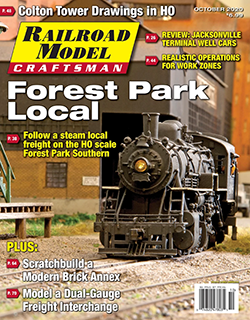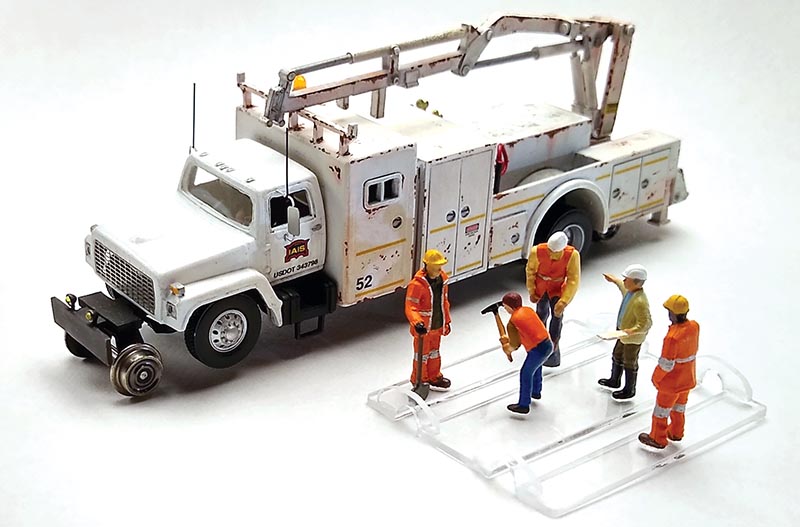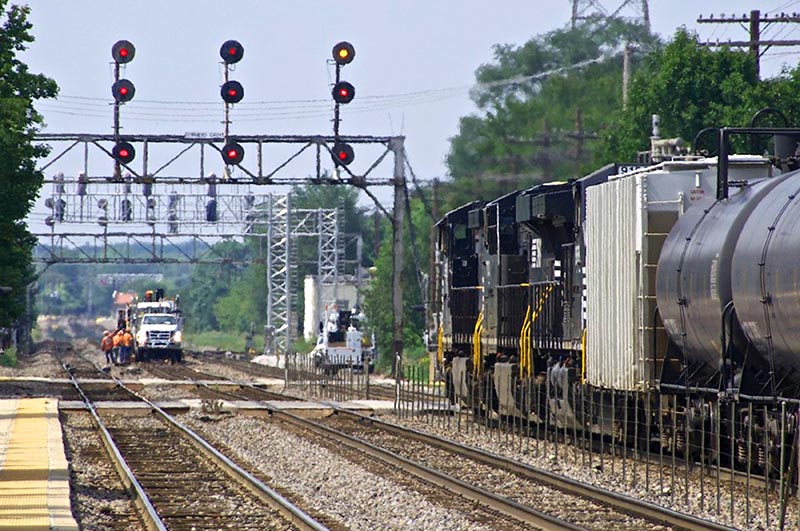 By Scott Thornton/photos as noted
By Scott Thornton/photos as noted
In prototype railroad operations, right-of-way maintenance and construction crews are a constant presence. Men and machines are building and repairing track, working on signals and crossing gates, and inspecting every inch of the property. How do we, as modelers and operators, represent these crews on the layout and within our operating sessions?
This is exactly what I was thinking about when I purchased an old but very nice maintenance-of-way (MOW) hi-rail truck made by Berlyn Locomotive Works. The truck is a brass model and is motorized. I had it modified with a DCC decoder, added front and rear headlights, a rotary beacon, and painted and weathered it for the Iowa Interstate Railroad (IAIS). I model a small, 12-mile branch line of the IAIS called the Milan Branch which runs from Rock Island, Ill., south to the small town of Milan. The branch has a speed restriction of 10 miles per hour because of track conditions – conditions that obviously require maintenance crews.

The addition of work crews can add operational interest to your model railroad. This hi-rail truck and track gang can be placed on the rails to simulate a track out of service, forcing your crews to work around the outage. Scott Thornton photo
I had originally planned to have the hi-rail truck make an appearance once during an operation session by moving across the layout and exiting via one of the staging extensions. But I discovered that although the model ran well across the track, because of its short wheelbase it had difficulty navigating the turnouts. This was disappointing, but then it occurred to me that I could use the truck as a static model with the animation of its lights and rotary beacon. Hi-rail vehicles by their very nature drive to locations and then drop onto the rails to access specific areas for repair. It would be easy to imagine the truck arriving at a spot to make a repair without actually having the model move across the layout.
During an operating session, I plan to place the truck on one of the three runarounds I have on the layout while the operators are busy at a different location. This will require them to follow safety procedures as their train gets closer and passes by the truck and crew (see sidebar on proper safety guidelines). Having the train crew make adjustments for maintenance equipment adds another level of play value to my operating session. But what about an actual ground crew? Maintenance trucks don’t run on their own – I needed a work crew to go along with the hi-railer…



